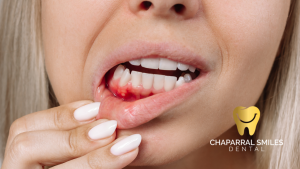Having a dental filling fall out can be an alarming experience, but it’s important to stay calm and know what to do. Whether the filling fell out while eating or from an old restoration, quick action can help minimize pain and prevent further damage until you can see a dentist.
This guide covers practical steps to take when your filling falls out unexpectedly, and how to protect your teeth and oral health.
Key Takeaways
- Stay Calm: It’s important to remain composed to address the situation effectively and avoid unnecessary stress.
- Seek Dental Assistance: Contact your dentist as soon as possible for an appointment to evaluate the problem and treat it appropriately.
- Protect the Area: Rinse your mouth with warm water and consider using dental wax or temporary filling material to cover the exposed tooth until you can visit your dentist.
Understanding Dental Fillings
A dental filling is a restorative material used to repair cavities or damage in a tooth, restoring its shape and function. Fillings are designed to protect the tooth from further decay or wear.
However, fillings are not permanent and can loosen or fall out over time due to wear and tear, biting force, or other factors.
Types of Fillings
There are several materials used for dental fillings, each with varying durability and longevity:
- Silver Amalgam
Typically lasts 10-15 years. - Composite Resin
Matches the tooth’s natural color but may need replacement every 5-10 years. - Ceramic (Porcelain)
Long-lasting (up to 15 years) and aesthetically pleasing. - Gold
Durable and long-lasting, with a lifespan of 15-20 years or more. - Glass Ionomer
Typically used for small fillings, not as durable as other materials.
Reasons for Fillings Falling Out
Fillings may unexpectedly dislodge for a variety of reasons
- Wear and Tear
Over time, chewing and grinding can weaken the bond between the filling and the tooth. - Decay
If new decay develops around the filling, it can cause the filling to loosen and fall out. - Biting on Hard Foods
Chewing hard items like ice, nuts, or hard candies can dislodge fillings. - Inadequate Bonding
In some cases, improper bonding during the initial procedure can cause fillings to fall out prematurely. - Tooth Trauma
A fall, blow to the mouth, or accident can damage both the tooth and the filling.
Immediate Steps to Take
When a filling falls out, it’s important to take immediate action to protect the exposed tooth.
Stay Calm
Remain calm and avoid panicking. This will help you take the necessary steps to manage the situation until you can see a dentist.
Assess the Situation
Look in the mirror to inspect the affected tooth. Check for:
- Any pieces of the filling are still in your mouth.
- Signs of additional damage, such as cracks or sharp edges.
- Whether the tooth is sensitive to air, cold, or hot food and drinks.
Rinse Your Mouth
Gently rinse your mouth with warm salt water to keep the area clean and reduce the risk of infection. Avoid using any mouthwash with alcohol, as it can irritate the exposed tooth.
Protect the Tooth
- Dental Wax
You can use dental wax (available at most drugstores) to cover sharp edges and protect the area until your dental visit. - Temporary Dental Cement
Over-the-counter dental cement can temporarily seal and protect the tooth from food particles and bacteria. Be sure to follow the product’s instructions carefully.
Avoid Certain Foods
Stick to a soft diet and avoid hard, sticky, or extremely hot or cold foods that could further worsen the discomfort or damage the exposed tooth. Soft options like yogurt, mashed potatoes, and smoothies can help prevent irritation.
Manage Discomfort
If the exposed tooth is causing discomfort, you can use over-the-counter pain relievers like ibuprofen or acetaminophen to alleviate the pain. Avoid applying pain relievers directly to the tooth or gums as they could irritate the tissue.
When to Contact Your Dentist
If your filling falls out, contact your dentist as soon as possible. Quick intervention can prevent further damage and restore the tooth before complications arise.
Signs That Require Urgent Attention
- Severe or sharp pain in the tooth or gums.
- Swelling, bleeding, or signs of infection (such as pus).
- Difficulty chewing or speaking due to discomfort.
- A noticeable crack in the tooth.
Home Remedies for Temporary Relief
While waiting for your dental appointment, these home remedies can help you manage discomfort and protect the exposed tooth:
- Salt Water Rinse
Rinse your mouth with warm salt water to keep the area clean and reduce inflammation. - Cold Compress
Apply a cold compress to the outside of your cheek to minimize swelling and discomfort. - Temporary Dental Filling
Use temporary dental cement to protect the tooth from food particles and bacteria until you can see your dentist.
Preventive Measures for the Future
Once you’ve had your filling replaced, there are steps you can take to prevent similar issues in the future:
Oral Hygiene Practices
Maintain excellent oral hygiene to help extend the life of your fillings:
- Brush twice a day with fluoride toothpaste.
- Floss daily to remove plaque between the teeth.
- Use an antimicrobial mouthwash to reduce bacteria.
Regular Dental Check-Ups
Visit your dentist every six months. These routine visits allow your dentist to monitor the condition of your fillings and detect any signs of wear or decay before they become problematic.
Conclusion
If a filling falls out unexpectedly, it’s important to stay calm, assess the situation, and take immediate steps to protect the affected tooth. Rinse your mouth with warm water, use temporary dental cement or wax if needed, and contact your dentist as soon as possible for a professional evaluation.
By following these guidelines, you can manage the situation effectively and protect your oral health until you receive professional care.





